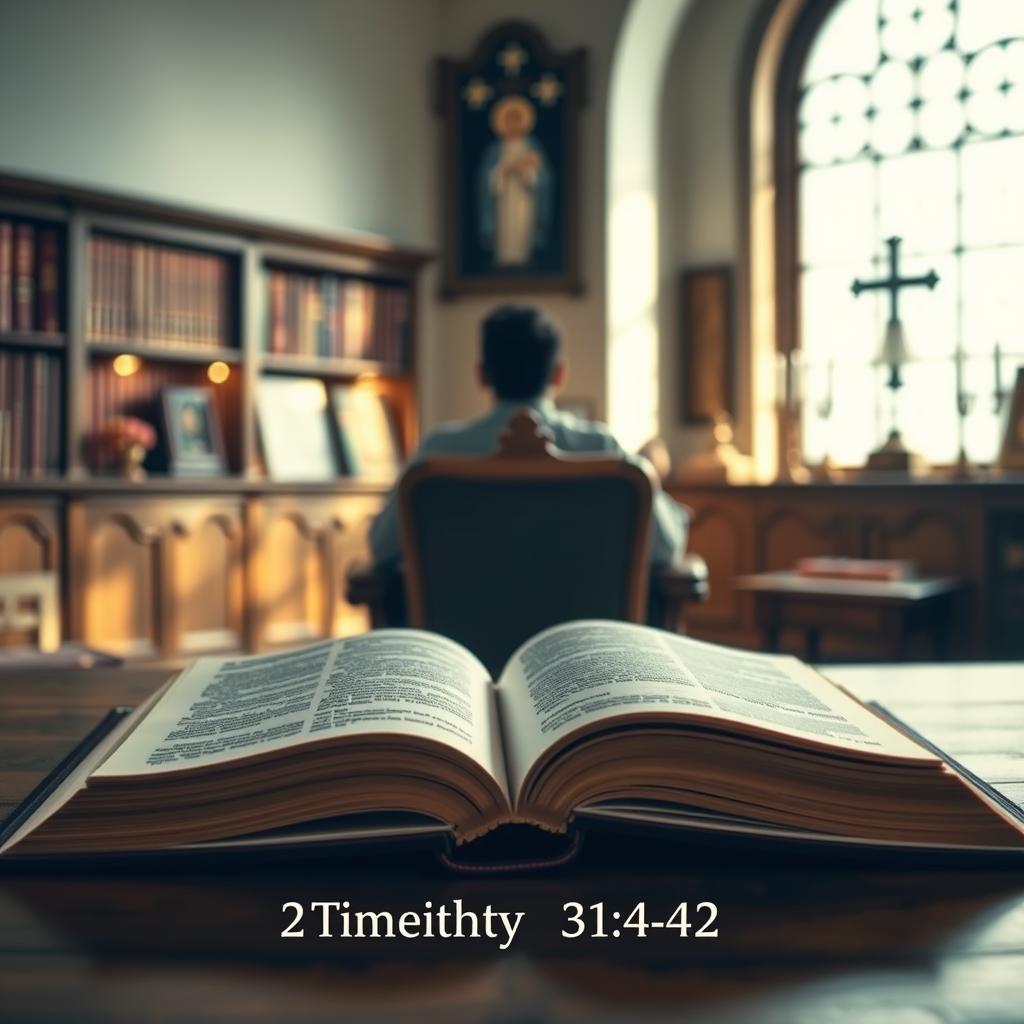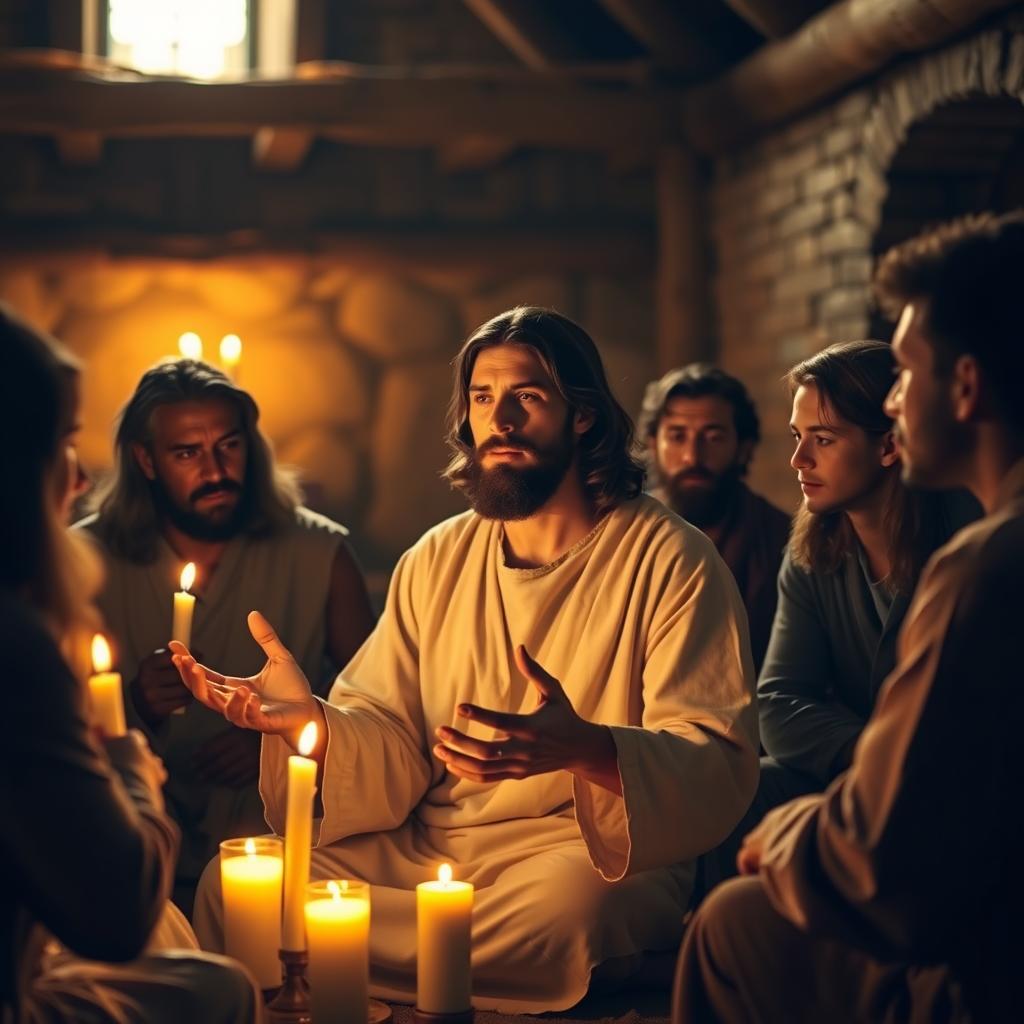Reflecting on the twenty-ninth Sunday in Ordinary Time, Cycle C, I see a big focus on never giving up in prayer and faith.
The readings from Exodus 17:8-13, Psalm 121, 2 Timothy 3:14-4:2, and Luke 18:1-8 teach us to trust in God’s power and presence.
The story of the persistent widow in Luke 18:1-8 reminds us to stay strong in our faith, no matter what.
Key Takeaways
- Persistence in prayer is a key theme in the readings for the twenty-ninth Sunday in Ordinary Time, Cycle C.
- The story of the persistent widow in Luke 18:1-8 offers valuable insights into the importance of trusting in God’s presence and power.
- The readings emphasize the need to remain steadfast in our faith, even in the face of challenges and uncertainties.
- The Sunday mass readings provide a rich source of reflection and guidance for Catholics.
- Catholic homily reflections can help deepen our understanding of the readings and their significance.
The Liturgical Season of Ordinary Time
As we explore the Catholic liturgical calendar, we find the season of Ordinary Time. It’s a key part of the Christian faith. This season focuses on the everyday aspects of living as a Christian. It offers a wealth of readings and reflections to help believers on their spiritual path.
Understanding Ordinary Time in the Catholic Calendar
Ordinary Time isn’t about being dull. It’s a time for the Church to grow and develop. It’s split into two parts, after Christmas and after Easter. The Church uses Sunday Mass readings to explore different themes and teachings, helping believers understand Christ’s message better.
Significance of Cycle C Readings
The Sunday Mass readings follow a three-year cycle: A, B, and C. Cycle C is the current one, offering a special view of the Christian faith. The Gospel of Luke readings in Cycle C give deep insights into Jesus’ teachings, focusing on prayer, faith, and the Kingdom of God.
Structure of Sunday Readings
The Sunday readings in Ordinary Time are structured to deepen our understanding of Christianity. The first reading comes from the Old Testament, the second from the New Testament Epistles, and the Gospel reading from one of the four Gospels. In Cycle C, Luke’s Gospel provides a unique look at Jesus’ life and teachings.
Twenty-ninth Sunday in Ordinary Time, Cycle C: Themes and Overview
On the twenty-ninth Sunday in Ordinary Time, Cycle C, the Church invites us to think about persistence in prayer and God’s faithfulness. This Sunday’s readings offer a rich mix of reflections on faith, prayer, and God’s interaction with us.

Central Theme of Persistent Prayer
The gospel reading from Luke 18:1-8 tells the parable of the persistent widow. It shows the key of persistent prayer. Jesus teaches his followers to pray always and not give up, showing the value of never losing hope in prayer.
- The parable shows the widow’s determination and the judge’s eventual response.
- It is a metaphor for our relationship with God, urging us to keep faith and persistence in our prayers.
Secondary Themes of Faith and Divine Response
The readings also explore the themes of faith and divine response. The first reading from Exodus 17:8-13 tells of Israel’s fight with Amalek and Moses’ raised hands. These symbolize the power of intercession and faith.
The second reading from 2 Timothy 3:14-4:2 highlights the role of scripture. It guides our faith and actions.
How These Readings Connect
The readings for this Sunday are linked by their focus on faith, prayer, and God’s response. They teach us to:
- Keep praying, like the persistent widow.
- Trust in God’s faithfulness, as shown in the Exodus story.
- Base our faith and actions on scripture, as Paul advises in his letter to Timothy.
Together, these readings offer a deep look at the Christian life. They stress the importance of persistence, faith, and scripture.
Exploring Exodus 17:8-13: Israel’s Battle with Amalek
Exodus 17:8-13 tells the story of Israel’s fight against Amalek. It shows Moses’ key role and the meaning of his raised hands. This part of the Bible teaches us about faith, leadership, and helping each other.
Historical and Narrative Context
The battle with Amalek happened during the Israelites’ desert journey. The Amalekites, a wandering tribe, attacked them. God helped the Israelites through Moses.
Moses acted as a bridge between God and the Israelites. He told Joshua to lead the fight while he prayed on a hill with God’s staff.
Moses’ Raised Hands as a Symbol
Moses’ raised hands were a sign of prayer and God’s help. When he kept his hands up, the Israelites won. But when he lowered them, the Amalekites took over.
This shows how important prayer is in fighting spiritual battles. Aaron and Hur helped Moses keep his arms up, leading to Israel’s victory.
The Support of Aaron and Hur
Aaron and Hur were key in helping Moses. They supported his arms, helping the Israelites defeat Amalek. Their actions show the value of working together in tough times.
| Character | Role | Symbolism |
|---|---|---|
| Moses | Leader and Mediator | Raised hands symbolize prayer |
| Joshua | Military Leader | Leads the Israelites into battle |
| Aaron and Hur | Supporters of Moses | Represent communal support |

This story from Exodus 17:8-13 teaches us about faith, prayer, and community. It’s a great lesson for Sunday Mass reflection.
Theological Insights from the Exodus Reading
Reflecting on Exodus 17:8-13, we find key themes that speak to our faith today. This story tells of Israel’s fight against Amalek, with Moses’ prayer being crucial.

Prayer as Spiritual Warfare
The story shows prayer as a form of spiritual warfare. Moses’ hands raised in prayer are key to Israel’s win. This shows prayer’s strength against challenges.
Prayer is not just sitting back. It’s an active fight for faith. It teaches us to turn to God when we face hard times.
The Necessity of Community Support
The tale also shows the necessity of community support. Moses can’t pray alone, so Aaron and Hur help. Their teamwork is crucial for Israel’s victory. It shows we need each other in our spiritual battles.
Perseverance in Difficult Times
The passage teaches us to persevere in hard times. Moses keeps praying, with his friends’ help. Their faith and support show the power of sticking together.
Looking at Exodus 17:8-13, we learn a lot about prayer and community. These lessons are especially important when things get tough.
Psalm 121: A Song of Divine Protection
Psalm 121 reminds us of God’s constant care. It’s a deep expression of trust in God’s protection. It speaks to the faithful across many generations.
Literary Structure and Background
Psalm 121 is a “Song of Ascent.” It’s part of a group of psalms (Psalms 120-134) sung by pilgrims going to Jerusalem. The psalm’s structure is simple, using parallelism to highlight trust in God’s protection.

Key Phrases and Their Meanings
Psalm 121 has key phrases that convey its message. “I lift up my eyes to the mountains” (Psalm 121:1) shows seeking help and protection. The answer, “My help comes from the Lord, the maker of heaven and earth” (Psalm 121:2), shows faith in God’s power.
The Image of God as Guardian
The psalm often pictures God as a guardian. It says, “The Lord will keep your going out and your coming in from now on and forever” (Psalm 121:8). This verse shows God’s ongoing protection and care for His people.
Some key points about God’s guardianship in Psalm 121 are:
- Omnipresent Protection: God is always watching, never sleeping.
- Faithfulness: The psalmist trusts God because of His faithfulness to His people.
- Comfort and Assurance: The psalm comforts and assures believers of God’s protective presence.
In conclusion, Psalm 121 reminds us of God’s protective care. It encourages believers to trust in His guardianship.
The Responsorial Psalm in Liturgical Context
Psalm 121 is a key part of the liturgy, linking with the first reading’s themes. It’s a crucial part of the celebration, offering a thoughtful reply to the scripture.
How Psalm 121 Responds to the First Reading
The first reading from Exodus 17:8-13 tells of Israel’s fight with Amalek and Moses’ prayer. Psalm 121 emphasizes God’s protection and presence. It says, “My help comes from the Lord, who made heaven and earth” (Psalm 121:2), showing God’s help to Israel in their hard times.
The ideas of divine protection and help are shared by both readings. This shows how the liturgical readings work together, linking different scriptures.
The Communal Nature of the Psalm Response
The responsorial psalm is more than just personal reflection. It’s a shared faith expression, strengthening community and belief. The psalm’s repeated question, “I lift up my eyes to the hills; from where does my help come?” (Psalm 121:1), brings worshippers together.
Musical Settings and Their Impact
The music for Psalm 121 greatly affects its impact in the liturgy. A good musical choice can deepen the psalm’s emotional and spiritual impact, making it stick in people’s minds. Different music can fit various liturgical settings and tastes.
When choosing music, consider:
- A melody that fits the liturgy’s mood
- Music that’s easy for everyone to join in
- Instrumentation that adds to the worship feel

2 Timothy 3:14-4:2: Paul’s Exhortation on Scripture
The passage from 2 Timothy 3:14-4:2 shows Paul’s advice to Timothy. It highlights the value of Scripture and sharing it. This part of Paul’s letter is key to understanding the role of the Bible in early Christianity and today.

Paul and Timothy’s Relationship
Paul’s letters to Timothy are personal and full of wisdom. They show the deep bond and trust between them. Paul had brought Timothy to faith and saw him as a true son (1 Timothy 1:2).
Their bond is important for spiritual guidance and passing faith down through generations.
Key aspects of their relationship include:
- Spiritual mentorship
- Shared missionary work
- Trust and loyalty
The Role and Authority of Scripture
In 2 Timothy 3:14-17, Paul says Scripture is “God-breathed” and useful for teaching and correction. This passage is key to understanding the Bible’s authority and value in Christian life.
The Bible plays many roles:
- Teaching: It gives us knowledge of God’s will.
- Reproof: It corrects behavior not in line with God’s commands.
- Correction: It guides us back to the right path.
- Training in Righteousness: It prepares us to live by God’s standards.
The Call to Proclaim the Word
In 2 Timothy 4:2, Paul tells Timothy to preach the Word always. He says to reprove, rebuke, and exhort with patience and care. This is a major duty for those caring for souls.
Effective sharing involves:
- Being ready to share the Gospel anytime.
- Reproving and rebuking with love and patience.
- Exhorting others to stay faithful.
In conclusion, 2 Timothy 3:14-4:2 offers deep insights on Scripture’s importance and the need to share it. As we reflect on Paul’s advice to Timothy, we see the Bible’s lasting value in our lives and mission to spread it.
Unpacking Paul’s Instruction for Modern Christians
The Apostle Paul’s words to Timothy, in 2 Timothy 3:14-4:2, are full of wisdom for today’s Christians. He stresses the role of Scripture in a believer’s life. This passage guides us on how to live our faith.
Scripture as “God-breathed”
Paul calls Scripture “God-breathed,” showing its divine origin and authority. This truth is key to understanding Christian teachings and practices. It tells us to rely on Scripture’s power to guide us in our actions.

Being Equipped for Every Good Work
Paul says Scripture helps us do good works. It’s crucial for living our faith every day. Through Scripture, we find the wisdom and courage to overcome obstacles and help others.
The Urgency of Paul’s Message
Paul’s message to Timothy is urgent. It’s a reminder of the Church’s importance today. As the world changes, his words remain vital for Christians to follow their faith.
In summary, Paul’s words in 2 Timothy 3:14-4:2 are still relevant today. By seeing Scripture as “God-breathed” and being prepared for good works, we can strengthen our faith. This way, we can live our calling with confidence.
Luke 18:1-8: The Parable of the Persistent Widow
The parable of the persistent widow teaches us to pray without stopping. It’s a key part of the Catholic liturgical cycle. It shows us the importance of prayer and faith.
Setting and Characters
The story takes place in a courtroom. It involves a widow and an unjust judge. The widow is fighting for justice, and the judge is unfair.
The judge doesn’t care about God or people. This makes the widow’s determination stand out. It also shows how the judge eventually agrees to help her.
The Unjust Judge and the Widow
The widow keeps asking the judge for justice. At first, he doesn’t want to help. But her constant requests finally get through to him.
This story is like our relationship with God. We should keep praying like the widow did. This is what Jesus teaches us.
Jesus’ Interpretive Conclusion
Jesus ends the story with a question. He asks if God won’t answer the prayers of those who pray day and night. This question shows God’s willingness to listen.
Jesus also says God will answer us quickly. Even if we don’t see it right away.

The parable teaches us to keep praying. We should trust that God will answer us in His own time.
| Key Elements | Significance |
|---|---|
| The Persistent Widow | Represents the marginalized and emphasizes persistence in prayer |
| The Unjust Judge | Contrasts with God’s justice, highlighting the effectiveness of persistence |
| Jesus’ Conclusion | Assures God’s timely justice to the faithful |
Jesus’ Teaching on Prayer and Faith
Jesus shows us how to grow our faith through prayer. In the Gospel of Luke, He tells a story about a persistent widow and an unjust judge. This teaches us the value of never giving up in prayer.

Praying Always Without Losing Heart
Jesus tells His followers to “pray always without losing heart”. He stresses the importance of keeping up with prayer. This advice helps us stay faithful, even when things get tough or our prayers aren’t answered right away.
God’s Justice and Timing
The story also talks about God’s fairness and timing. Jesus compares God to the unjust judge, showing God’s kindness and justice. While the judge helps the widow for his own reasons, God answers our prayers with love and fairness.
The Question of Faith at the Second Coming
Then, Jesus asks a big question: “When the Son of Man comes, will he find faith on earth?”. This question makes us think about our faith and how we show it through prayer. It reminds us to keep our faith strong, ready for the Second Coming.
In summary, Jesus teaches us about the power of persistence and trust in God’s timing. As believers, we should pray without giving up, trusting in God’s perfect plan and timing.
Connecting the Scriptural Threads
Looking closely at the readings for the Twenty-ninth Sunday in Ordinary Time, Cycle C, we find a rich mix of themes. These themes revolve around faith and how God answers our prayers. They show us the key role of persistence in prayer and God’s response to our faithfulness.

Persistence in Prayer Across All Readings
In Exodus 17:8-13, Moses’ raised hands represent prayer. This shows the power of praying without giving up, even when things get tough. Luke 18:1-8 tells the story of a persistent widow. Jesus uses this parable to show the strength of never-ending prayer.
Paul’s words in 2 Timothy 3:14-4:2 remind us to hold onto our faith. He uses scripture to encourage us to stay strong in our beliefs, just like we do in prayer.
The Divine Response to Human Faithfulness
The psalmist in Psalm 121 talks about God’s constant support and protection. This shows God’s response to our faith. Luke 18 also talks about God’s justice for those who stay faithful.
Community Support in Spiritual Life
In Exodus, Aaron and Hur help Moses, showing the power of community in our spiritual journey. This idea is important in Catholic homily reflections. It shows how important it is to have others support us in our faith.
In summary, the readings for the Twenty-ninth Sunday in Ordinary Time, Cycle C, weave together a tapestry of faith and prayer. They highlight the importance of persistence in prayer and God’s response to our faith. They also stress the importance of community in our spiritual lives.
Practical Applications for Daily Christian Living
The readings for this Sunday teach us about never giving up in prayer and supporting each other on our spiritual paths. These lessons help us live our faith every day.
Developing Persistence in Prayer
The Gospel reading (Luke 18:1-8) shows us the power of never giving up in prayer. Jesus uses a story to teach us to always pray, no matter what. This lesson tells us to keep praying with hope and faith in God’s timing.
To keep praying with persistence, we can make a prayer schedule. Set times each day to talk to God. Keeping a prayer journal helps us see how God answers our prayers.

Supporting Others in Their Spiritual Journey
The readings also talk about the importance of community and helping each other spiritually. In the second reading (2 Timothy 3:14-4:2), Paul says Scripture helps us do good works. He encourages us to support each other through teaching, encouragement, and prayer.
To help others on their spiritual journey, we can serve, encourage, and pray for them. This builds a strong community of faith, helping everyone grow closer to God.
Trusting God When Answers Seem Delayed
Trusting God, even when we don’t see answers right away, is key to persistent prayer. The parable of the persistent widow teaches us God’s timing is different from ours. But His justice will come, even if it takes time.
By thinking about these lessons, we can grow our faith and live our Christian lives better. These insights come from the Twenty-ninth Sunday in Ordinary Time, Cycle C readings.
Homily Preparation and Preaching Ideas
Preparing a homily means understanding the scriptural readings well. These readings for the Twenty-ninth Sunday in Ordinary Time, Cycle C, offer great material. They help us create meaningful homilies.
Key Points for Effective Preaching
Good preaching is more than sharing facts. It’s about linking the scriptural message to our daily lives. Key points to consider include:
- Understanding the liturgical context of the readings
- Reflecting on the central themes and their application
- Using illustrative stories to make the message relatable

Illustrative Stories and Examples
Stories make homilies more engaging. They help us connect with the message. For example, the parable of the persistent widow in Luke 18:1-8 can inspire us to keep going, even when things are tough.
“The effective homilist is not just one who speaks well, but one who listens to the Spirit and to the people, and speaks to their hearts.” –
Questions for Congregation Reflection
Ask questions to help the congregation reflect. For example:
- How do we keep praying when things get hard?
- How can we support each other on our spiritual paths?
- How does the parable of the persistent widow encourage us to trust in God’s justice?
By using these strategies, homilies can deeply impact the congregation. They guide us in our faith and spiritual growth.
Conclusion
The twenty-ninth Sunday in Ordinary Time, Cycle C, teaches us about the power of persistence in prayer and faith. The readings from Exodus, Psalm 121, 2 Timothy, and Luke show us that our spiritual journey is not alone. It is a shared path with others.
The Exodus reading tells us how important community support is during tough times. Psalm 121 comforts us with the promise of God’s protection. Paul’s words in 2 Timothy remind us of the power of Scripture in helping us do good works. The parable of the persistent widow in Luke 18 teaches us to keep praying, no matter what.
Reflecting on these readings, we learn to deepen our faith and trust in God’s timing. The twenty-ninth Sunday in Ordinary Time, Cycle C, urges us to keep praying, believing God will answer.
By embracing these teachings, we build a stronger faith. This faith is supported by our community and guided by Scripture.

